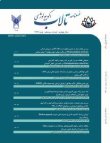Correlation of chromium, zinc and copper with length, weight, age and gender in muscle of white fish (Rutilus kutum) captured from northern and southern Anzali wetlands
Heavy metals such as copper and zinc are essential for fish and human metabolism. But excessive concentrations of heavy metals impair ecosystems as some of those cause potential bioaccumulation in live beings. Fish are the major inhabitants in water bodies and can be highly affected by these toxic pollutants. The presence of these contminations in fish is known to cause various diseases in humans. White fish are popular among people; therefore it is important to study the amounts of heavy metals in them in respect of health and the health of the community food. The purpose of this review was to check the accumulation and concentration of chromium (Cd), zinc (Zn) and copper (Cu) in white fish muscles, to study the relationships between fish size (length and weight) and metal concentrations in the tissues and to compare their amounts with FAO standard. White fish (60 numbers) were caught of northern (Anzali) and southern (Someh Sara) Anzali wetlands in winter of 2017. The concentrations of heavy metals were measured in the edible tissue using a flame atomic spectrophotometry. The average of weight and length were 460 -468g and 31 – 32.40cm in white fish. The concentrations average of zinc and copper were 11.32 and 13.61 (mg/kg, dry weight) in white fish of northern and southern Anzali wetlands, respectively (P<0.05). The Cd concentration average (mg/kg, dry weight) was zero in white fish (P>0.05). The copper concentration average (mg/kg, dry weight) was 2.47 and 3.66 in white fish of northern and southern Anzali wethlands, respectively (P>0.05). Mean of zinc and copper levels were significantly lower than FAO (P<0.05). The zinc concentration level was greatest in the muscle of white fish followed by Cu and Cd. Studied metals had not significant differences in the edible tissue of captured samples from northern and southern Anzali wetlands (P>0.05). Acoording to achievement results for chromium could not be studied its correlate with length and weight. A negative correlation occurred between Cu and Zn levels with length and gender in the muscle of captured White fish from northern and southgern Anzali wetlands. Positive correlation happened between Cu concentrations with weight of fish in southern Anzali wetland. Relationship was negative between heavy metald Cu with age of studied fish in northern Anzali wetland. Significant differences were not observed in correlation (P>0.05). As the permissible levels of chromium, zinc and copper are stated to be 0, 50 and 20 microgram/gram by FDA; therefore, the captured white fish of northern and southern Anzali wetlands is suitable for human consumption and has no side effects for humans’ health in terms of food hygine.
- حق عضویت دریافتی صرف حمایت از نشریات عضو و نگهداری، تکمیل و توسعه مگیران میشود.
- پرداخت حق اشتراک و دانلود مقالات اجازه بازنشر آن در سایر رسانههای چاپی و دیجیتال را به کاربر نمیدهد.



